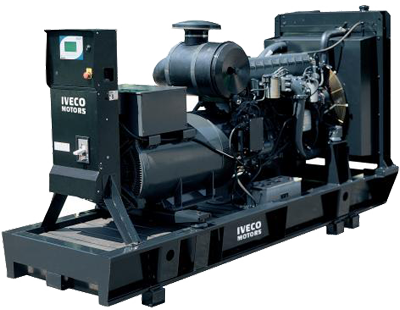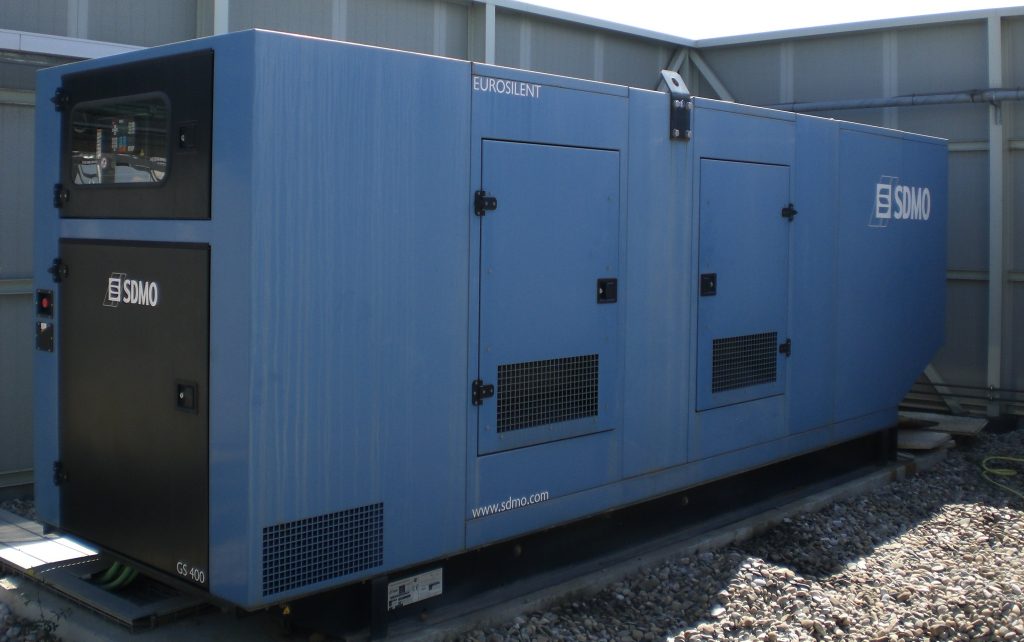Foxfab proudly presents the 700.3F Switch Enclosure — the ultimate solution for facilities with a permanent generator and automatic transfer switch who are looking to conduct load bank testing.
This 3 Way manual transfer switch allows for load bank testing while having a portable generator tie into the building during maintenance or testing. This switch meets the new NEC 700.3(f) parameters and ensures your facility will not be without power during any type of generator maintenance. Check out the product FFCC-S1 here.
Applications include:
- Airports
- Hospitals
- Waste Water Treatment
- Financial Institutions
- Data Centers
- Industrial Sites
- Care Homes
- And more…
Learn more about how the 700.3F switch can save your facility time and money, and increase the safety of your load bank testing by watching our video!
An Uninterruptable Power Supply also known as a UPS is an alternative power source. It has a standby diesel generator to protect the load of the energy it produces. They are designed to connect loads with their inverter that has the supply of voltage and a break-free supply of electrical energy. UPS systems are important to businesses which cannot operate if the power goes out. Load banking testing will make sure the UPS meets the requirements, and they will perform when they are needed. 
Load bank testing will make sure the performance and the battery of the UPS is working properly. The condition of the load is tested. The UPS battery will only perform as well as the weakest battery cell. This testing can determine if the battery cells are about to fail. They can be replaced ahead of time, so the unit will work when it is needed.
Load bank testing is performed by service suppliers such as us at Fox Fab. Vendors state that when working with a UPS system, caution must be used. This should be done once a week to make sure the battery is fully charged, and there are no blockages. This testing will give accurate results of how the system is running. These tests will help save both time and money.
Load bank suppliers may have their own smaller load banks of 100kW or less. The load banks are resistive and can be used on AC or DC systems. A local bank can be used to test the entire system. The dc load bank can be used to test just the battery. Reactive load banks are larger and can be used for bigger devices.
Why perform a load bank test?
This test will determine if the power protection system can work and provide power to the protected loads. This can see if they can hold up when needed.
The UPS is there with the hope that it will not have to be used. They should work just in case. If the power fails and this system does not work then there is big trouble. They need to be fully functional. The entire system needs to be checked to make sure it is in running order.
Reporting the Results
Load banks should have a suitable rated cable that is not put longer than 20 meters away from the UPS terminal of the PDU for output. Load banks have heating and cooling, and this should also be tested to make sure these elements are in working condition. The unit should not be placed near sensitive alarms, sprinkler systems, and areas where people will be working.
The measurements that taken during the discharge test can help determine the condition of the battery as well as the performance of the system. The test will show any problems with the generator or the UPS. Measurements should be taken to fix any issues right away. The standby generator will test the ability to provide the amount of power that may be needed. It should verify the stability of the voltages, the stable frequency, and how well the control work under many different conditions.
The fuel and oil pressures also need to be checked. When checking the system remove anything that may have been deposited on the pistons, the engine casting, and the exhausts. This can lead to problems in the future.
Testing a generator will include the hiring of the equipment, the time the engineer spends on the test, and the cable connections required. Maintenance is needed, and the equipment should be cared for on a regular basis. The testing itself should check the entire system including the battery discharge and the place of the connection if it is at risk. The testing is done during normal working hours by professionals that have experience with load testing.
Load bank tests will help make sure that all parts of the power protection system are in proper working order. This will make sure this machine is working well when it is needed to help support the critical load and will provide power as needed to keep your business running in the event of a power outage.
Diesel engines (the main movers located on a diesel generator set) are designed to operate with a minimum amount of load. This ensures that they will perform at an exceptional level without any problems. The manufacturer determines how many loads the engine needs, but it’s important to point out that the average range is 40% To 50% of the kilowatt rating. Studies show the diesel engines perform better in the 70% to 80% range of rated output. At this range, they provide a greater output.
A load bank helps a diesel engine get to an acceptable operating temperature fast, and it helps minimizes the chances of wet stacking taking place. Wet stacking is a unique condition that occurs when you run an engine in an unloaded condition, or continuously use it at less than the industry’s minimum load level. When wet stacking takes place, the fuel injection tip will start to carbonize and cause problems for the fuel spray problem. Wet stacking is one of the reasons why important centers buy a new load bank generator each year.
Why Emergency Power is Important
Consulting engineers with experiencing in emergency power equipment are aware that installations for important facilities like hospitals must meet NFPA 110 standards to satisfy the National Electrical Code. If you read the NFPA 100 details closely, you will see that Section 7.13 specifies the type and length of load testing for generator sets for mission-critical facilities.
The Y2K and 2003 blackout taught us that operating emergency power can save lives. Fortunately, load bank technology today provides inexpensive solutions to make sure that diesel generator sets are loaded correctly. Monthly load bank testing can determine if the diesel generator is putting out enough power.
Specifying Load Banks

The first step of specifying load banks require you to get the voltage and kilowatt rating of the prospective load bank. In some instances, clients want the load bank to have the same kilowatt rating as the generator set. They know that many generator sets are built for future growth. This is the primary reason why clients will spare no cost when it comes to adding more equipment like UPS systems, drives, or high-performing computers. The generator sets will be able to handle extra equipment.
For the next step, you must find out what type of load bank is suitable for the application. The three common resistive load banks types in the market are radiator mount, portable, and permanent. Let’s take a close look at them.
Radiator Mount
A radiator mounted load bank does not have cooling fan controls. Many companies choose the radiator mounted load bank generator because it’s cost-effective. It is designed to be attached on the radiator of the genset, and it depends upon the airflow in the radiator to keep its load elements cool. The unit is thirteen inches deep, and it will keep the back-pressure on the radiator in check.
It is vital for you to know that a radiator mounted load bank is a complimentary load to the genset. An experienced engineer knows that a 100% rated radiator mounted load bank will overheat the generator set. The average radiator mounted load bank is 50% to 70% of the generator set kilowatt capacity. If a client needs a 100% rated load bank, a freestanding permanent load bank will be the best option.
Radiator mounted load banks are placed in the warm exhaust of the radiator. It needs to be made out of heat resistant material. The primary aim is to avoid overworking the load bank. You don’t want the load bank to behave like a heat sink for the radiator. The engineer should focus on using load banks that are made out of durable aluminum steel. Galvanized steel is not recommended for any project related to a center that provides important and emergency services.
The radiator mounted load bank should have a remote control panel, an automatic load dump, third-party certification. It should also be manufactured out of weatherproof materials. Weatherproof materials will protect it from the heat, rain, and snow. New enclosures on the market can be mounted on the enclosure. Buying a new enclosure is one sure-fire way of protecting an expensive investment.
Portable Units
Portable units are starting to gain more popularity in the load bank generator industry. Portable units are designed for indoor usage. They have basic controls and metering systems. They can also load at several different voltages. With casters at hand, they can be moved to any location with ease. One kilowatt portable load bank can be used to test them. Load bank testing is the easiest way of determining if the portable unit is working well.
Permanent Load Banks
Permanent load banks are the best option when the application permits installation on a rooftop or a sturdy concrete pad. If the client needs a 100% load on its generator set, permanent load banks should not be overlooked. Freestanding load banks come with basic cooling fans and they do not put any static pressure on the generator. This feature helps permanent load banks last for several years. It is also vital to mention that permanent load banks can perform in any type of weather. Snow, heavy rain, or hot weather will not slow it down. However, it’s important for the engineer to make certain that the unit is protected with outdoor weatherproof construction and a third-party certification (CE, CSA, UL, or Canadian UL).
Permanent units normally use a convenient remote control panel. The remote control panel can be placed anywhere from 50 to 250 feet away from the load bank. It would be a grave mistake to operate a permanent load bank without an internal strip heater that gets power from an exclusive voltage source (120 V, 1-phase, 60 Hz). The strip heater will kick on when the temperature gets below 50 F.
Final Conclusion
The engineer must get the above information from the client. This helps the engineer to select a load bank generator that will be ideal for the client. The engineer must also make certain that the load bank meets local, state, and federal codes. Most manufacturers of load banks offer downloadable specifications. The engineer simply plugs in the required voltage, kilowatt, and any other details that will serve the client’s needs.
Load bank testing is one important matter that engineers cannot afford to ignore. This helps ensure that the load bank will operate well for the client. A monthly load test will determine if the client has reliable back-up power. The three most popular types of load banks (permanent, radiator, and portable) are well-known for meeting standard requirements without increasing the client’s monthly overhead, or letting them down during an emergency situation.


